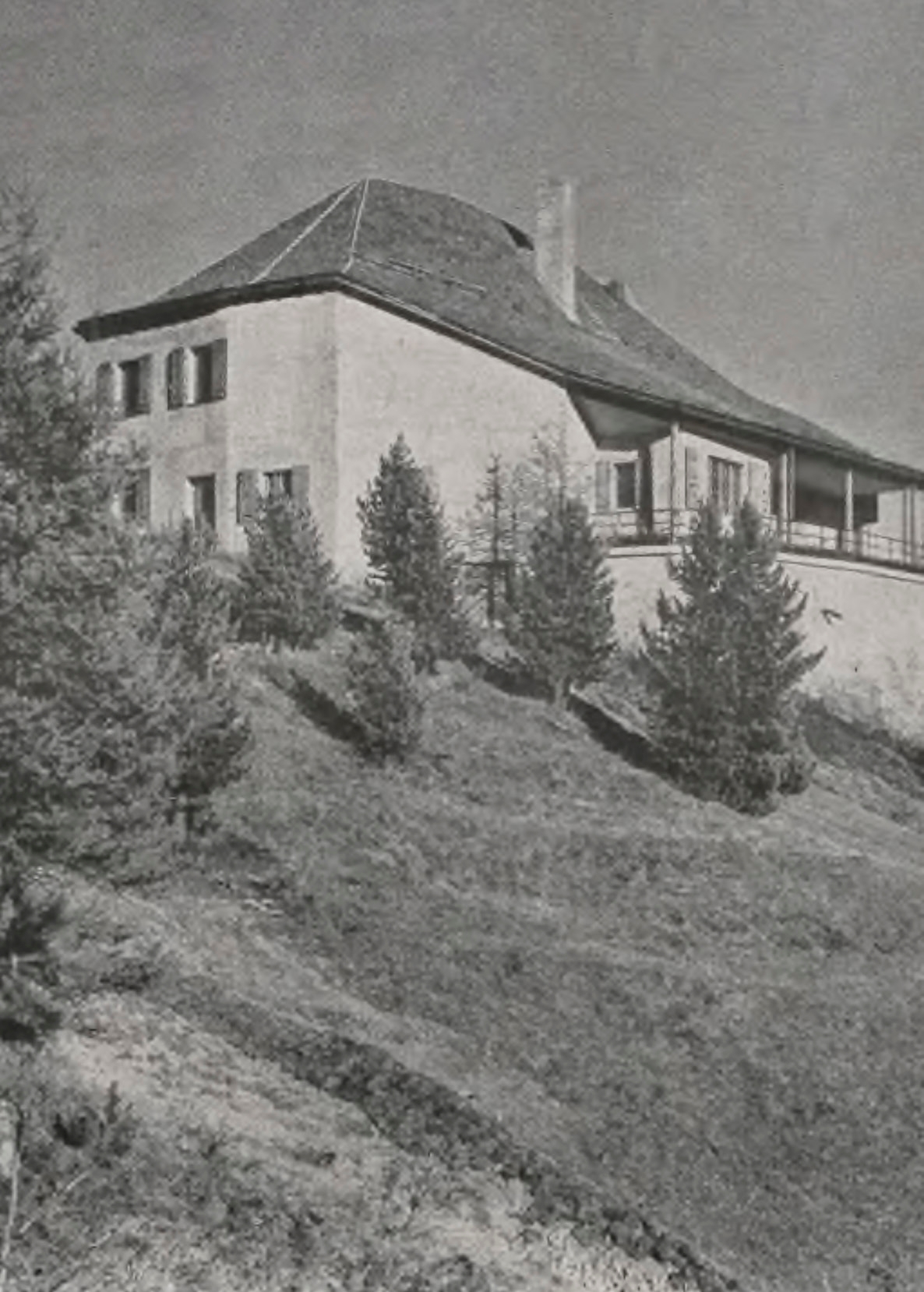
Heinrich Tessenow (1876-1950) is best known for his small houses, however his design for the Böhler House in Oberalpina, near St. Moritz (1916-1917), is a unique example in his body of work. Commissioned by Heinrich Böhler, the heir of an industrialist, the house reflects Tessenow’s move away from Jugendstil and contemporary trends like Heimatstil. Instead, he created a timeless, understated architecture that blends seamlessly with the Alpine landscape. The large atelier for the Böhlers, both painters, was central to the design, a house envisioned as a space for artistic creation.
The irregular geometry and simple forms contrast with the idyllic setting; Tessenow used the natural slope of the land, aligning the roofline and terrace wall with the terrain. The interior’s orthogonal layout, combined with modest details like built-in cabinets, created a functional yet elegant space. The small dining room and expansive veranda emphasised the surrounding views, making the Alpine landscape a central part of how the house is experienced.
Although Tessenow’s design was slightly altered during construction, the house stood as an example of restrained beauty in the mountains. Tragically, it was demolished in 1989 by Alfred Heineken, who sought an unobstructed view. Despite public opposition, the house was torn down after a referendum in favour of demolition. Its loss is compounded by a lack of detailed documentation, with only a few photographs and drawings that preserve its legacy.







